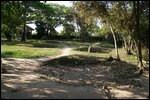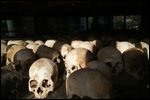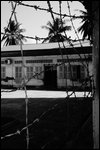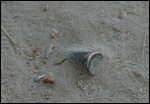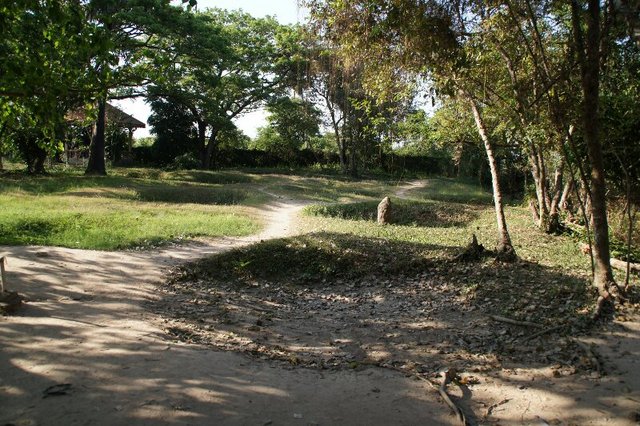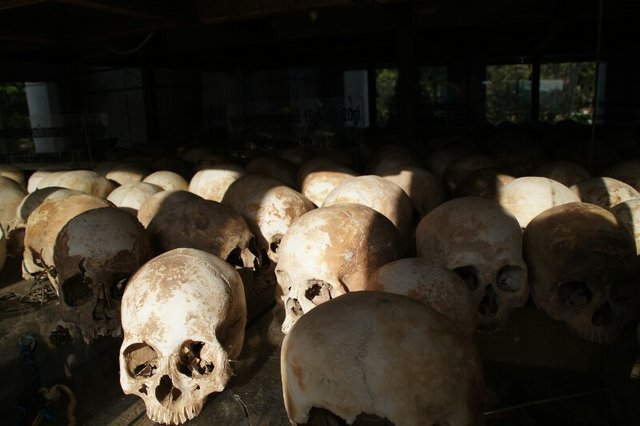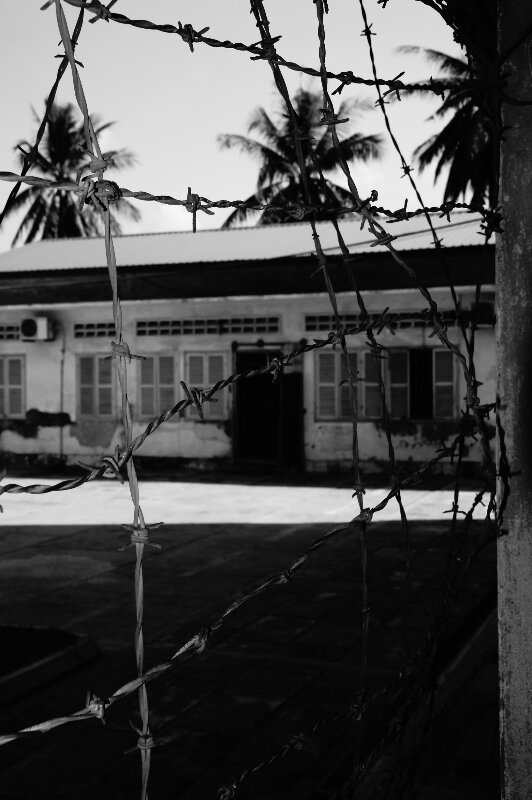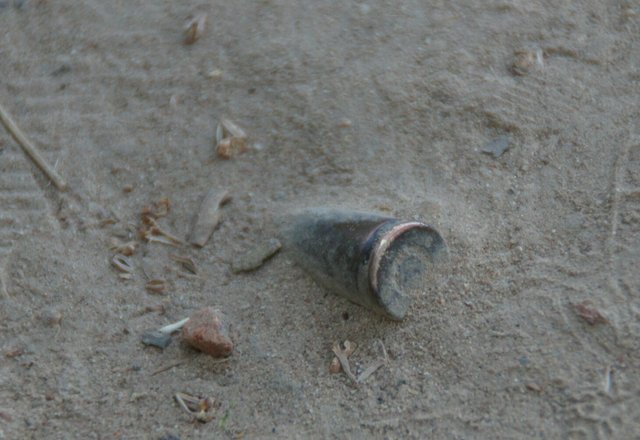Cambodia has a dark past and a sorrowful recent history. Nowhere are we more urgently reminded of that than in its capitol Phnom Penh.
As the Khmer Rouge rose to power in 1975, led by Pol Pot, Nuon Chea, Ieng Sary, Son Sen, and Khieu Samphan one of the most massive genocides in history started. The name of the country was at that dark period Democratic Kampuchea, and under the Khmer Rouge regime the population decreased from 7 million to roughly 4 million, with at least 1,7 million people being murdered and the rest fleeing to mostly Vietnam and Thailand.
As an agrarian, penny- and propertyless society was, according to the Khmer Rouge, the ideal solution, there was not much need of cities. That is why the citizens of Phnom Penh, roughly a million of them, were forcibly removed from the city overnight. There have been many ghost towns for various reasons, but never before in recent history has there been a ghost city. With the capitol firmly in control of the etreme communist regime, it was used as a base for governmental operations, including the prison system.
One of the more infamous prisons/interrogation/torture facilities is S-21 (Security prison 21) of Tuol Sleng. A former high school, this was were they took everyone that was considered a threat to the agrarian communism the Khmer Rouge had in mind: Doctors, engineers, mechanics, intellectuals. In unspeakable conditions, these people were held captive, interrogated, tortured and abused, simply for the crime of not being uneducated farmers. With accusations of being Vietnamese spies, or working with the CIA or KGB, they were daily tormented by various means of torture, they were starved and locked into tiny cells, and weren't allowed to talk to the other victims. The ruthless guards were mostly teenagers, having been brainwashed to do what they believed to be right.
Whether a confession or not arose from the frequent torturous interrogations, the victims were eventually transported to Choeung Ek. Being told they were being transported to their new home as farmers on the countryside, they were in fact ushered blindfolded and shackled into covered vans, taking them the one hour ride to Choeung Ek, most commonly known as The Killing Fields.
The victims were often beaten to death with metal pipes or chains. Sometimes machetes were used, but as the enemy closed in, and the numbers of prisoners increased, the perpetrators started to use bullets instead, all for a quicker way of execution.
Not all victims were adult males. Far from it. Infants, children and women received the same, if not worse treatment. Children being taken away from their mothers, sometimes killed in front of them, added to the atrocities.
And all this took place, not in a muddy stretch of dead wasteland far off, but in lush and beautiful surroundings, with local people just nearby. And they never knew what was going on; to drown out the screams, music was played incredibly loud. To conceal the smell of the rotten corpses, chemicals were sprinkled over the bodies.
The horrors finally ended in 1979, when the Vietnamese liberated Phnom Penh and released the Cambodian people from the clutches of the Khmer Rouge. To a certain degree.
